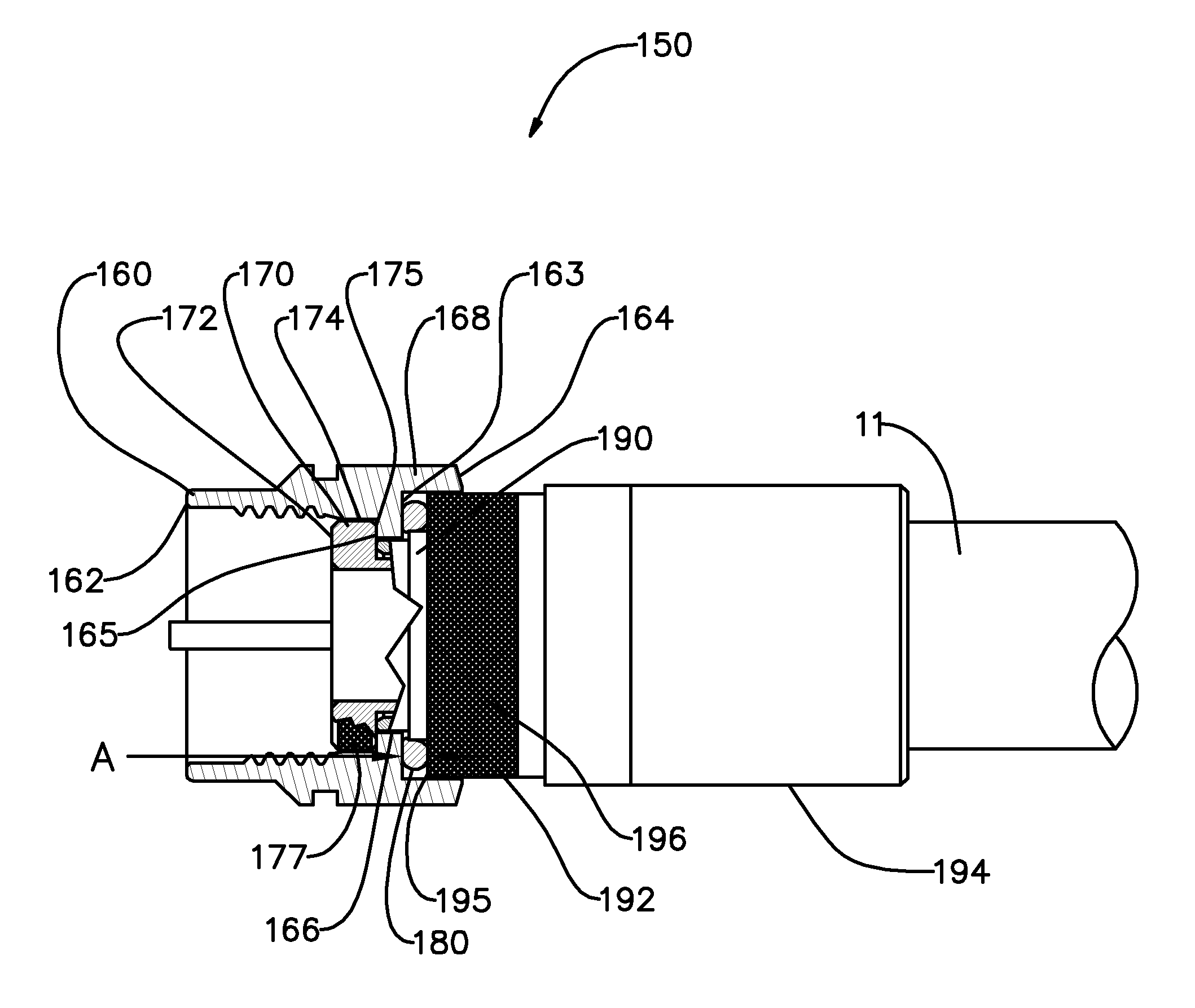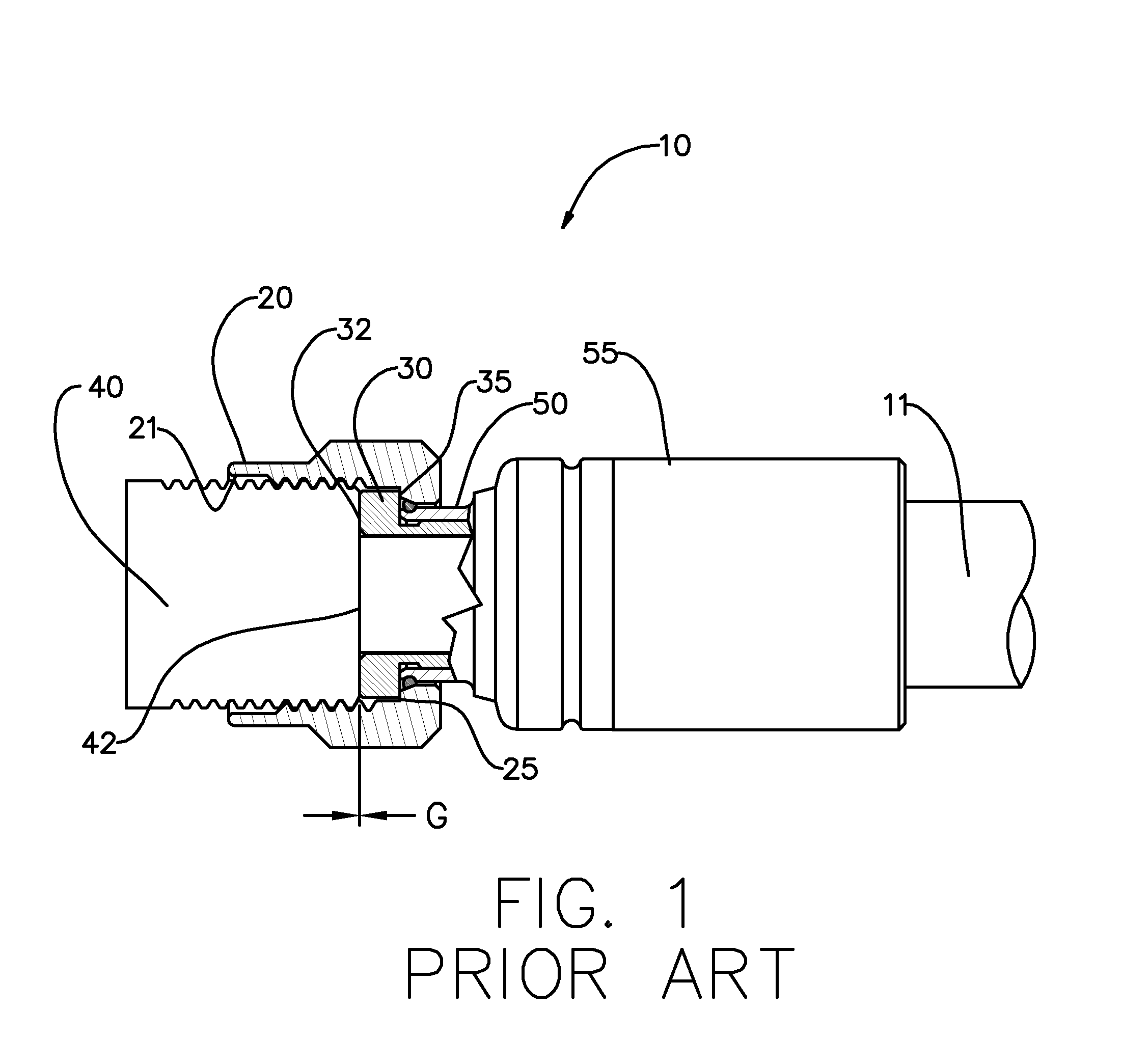Coaxial Connector With Inhibited Ingress and Improved Grounding
a technology of inhibiting ingress and improving grounding, which is applied in the direction of coupling devices, two-part coupling devices, electrical apparatuses, etc., can solve the problems of loose fittings of type f connectors, insufficient tightening, and inability to properly tighten
- Summary
- Abstract
- Description
- Claims
- Application Information
AI Technical Summary
Problems solved by technology
Method used
Image
Examples
Embodiment Construction
[0031]Reference will now be made in detail to embodiments of coaxial connectors, examples of which are illustrated in the accompanying drawings. Whenever possible, the same reference numerals will be used throughout the drawings to refer to the same or like parts.
[0032]Referring to FIG. 1, a prior art coaxial connector 10 has a coupling nut 20, a post 30, a body 50, and a compression ring 55. The coaxial connector 10 is an axial-compression type coaxial connector and the connection of the coaxial connector 10 to a coaxial 11 cable is known in the art. The coaxial connector 10 is illustrated in FIG. 1 in its attached, compressed state. When properly tightened to port 40, the gap “G” between post face 32 and port face 42 is completely closed. In other words, post face 32 and port face 42 are in intimate contact.
[0033]FIG. 2 illustrates coaxial connector 10 and port 40 of FIG. 1, wherein coupling nut 20 of connector 10 is not fully tightened thereby allowing post face 32 and port face ...
PUM
 Login to View More
Login to View More Abstract
Description
Claims
Application Information
 Login to View More
Login to View More - R&D
- Intellectual Property
- Life Sciences
- Materials
- Tech Scout
- Unparalleled Data Quality
- Higher Quality Content
- 60% Fewer Hallucinations
Browse by: Latest US Patents, China's latest patents, Technical Efficacy Thesaurus, Application Domain, Technology Topic, Popular Technical Reports.
© 2025 PatSnap. All rights reserved.Legal|Privacy policy|Modern Slavery Act Transparency Statement|Sitemap|About US| Contact US: help@patsnap.com



